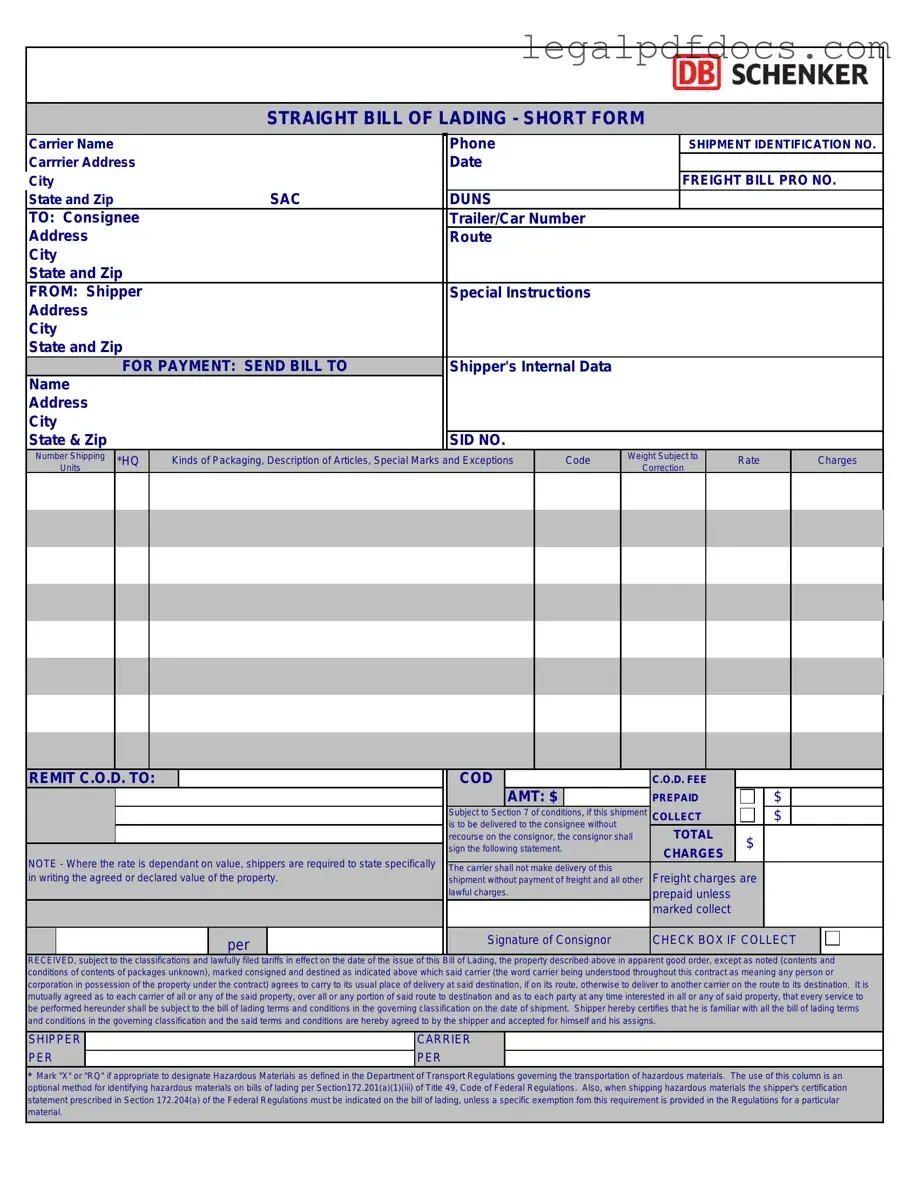The Straight Bill of Lading is an essential document in the shipping and logistics industry, serving as a crucial tool for both shippers and carriers. This form acts as a receipt for goods, confirming that the carrier has received the items in good condition and is responsible for their transport to a specified destination. Unlike other types of bills of lading, the Straight Bill of Lading is non-negotiable, meaning that the goods can only be released to the named consignee. This feature ensures a higher level of security for both the shipper and the receiver. Additionally, the form includes vital information such as the description of the goods, the shipping instructions, and the parties involved in the transaction. Accurate completion of the Straight Bill of Lading is critical, as any errors can lead to delays or disputes during the shipping process. Understanding this form's role and how to properly utilize it can significantly streamline logistics operations, making it a key component for anyone involved in the movement of goods.
